
Work in progress.
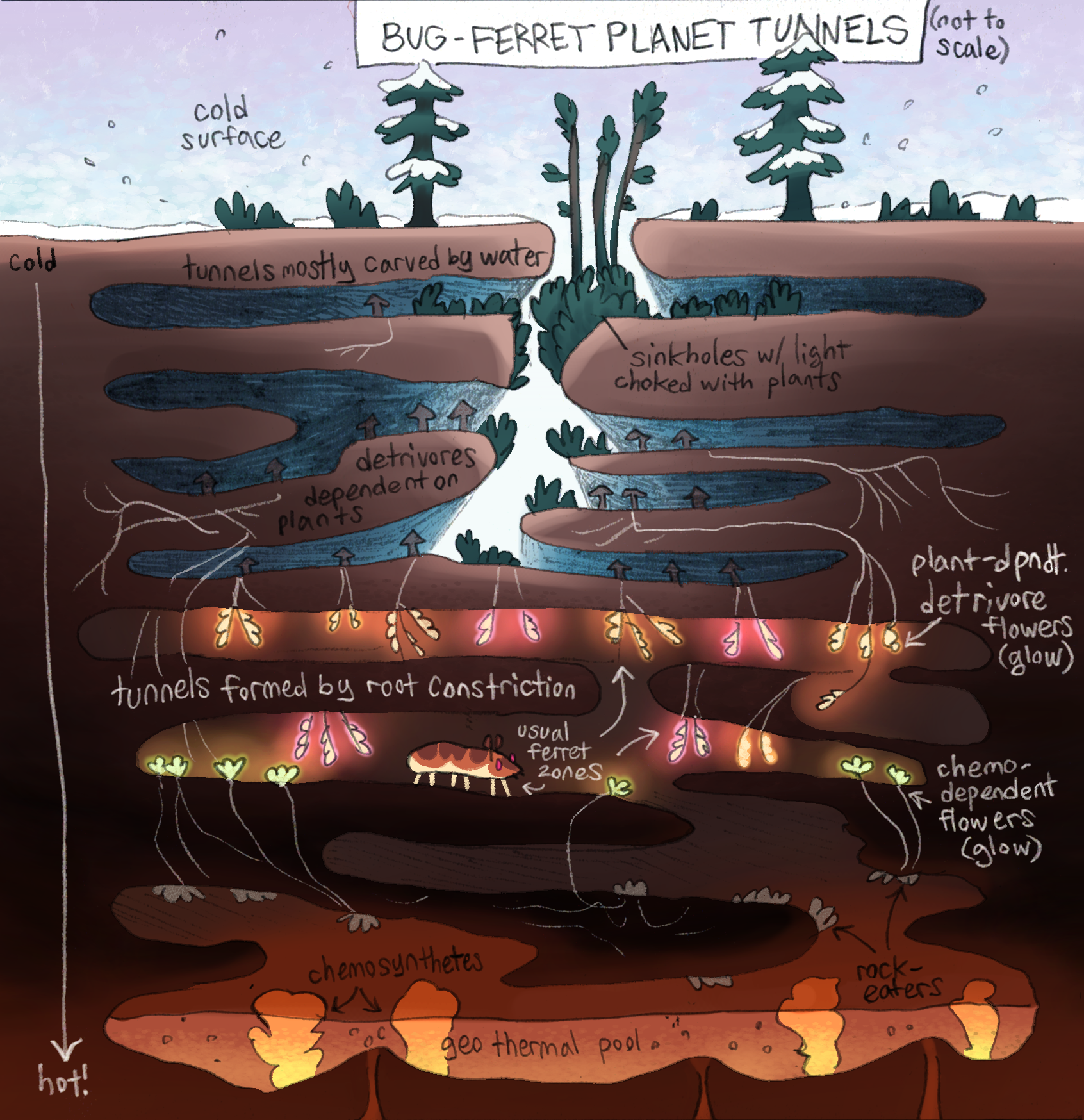
Bug ferrets live in an extensive tunneling cave network below their temperate-to-frozen planet’s surface. These caves are partially formed by water, with huge geothermal lakes in their deepest regions, but much of their spread is created by the roots/mycelium constricting and eating the planet’s crust. The tunnels these roots create are filled with their glowing flowers and fruit, attracting pollinators and frugivores to spread their genetics to new regions of the underground. Bug ferrets themselves evolved from such pollinators, though their diet also includes basically anything they can manage to eat, including the small herbivores that dine on their glowing flower gardens.
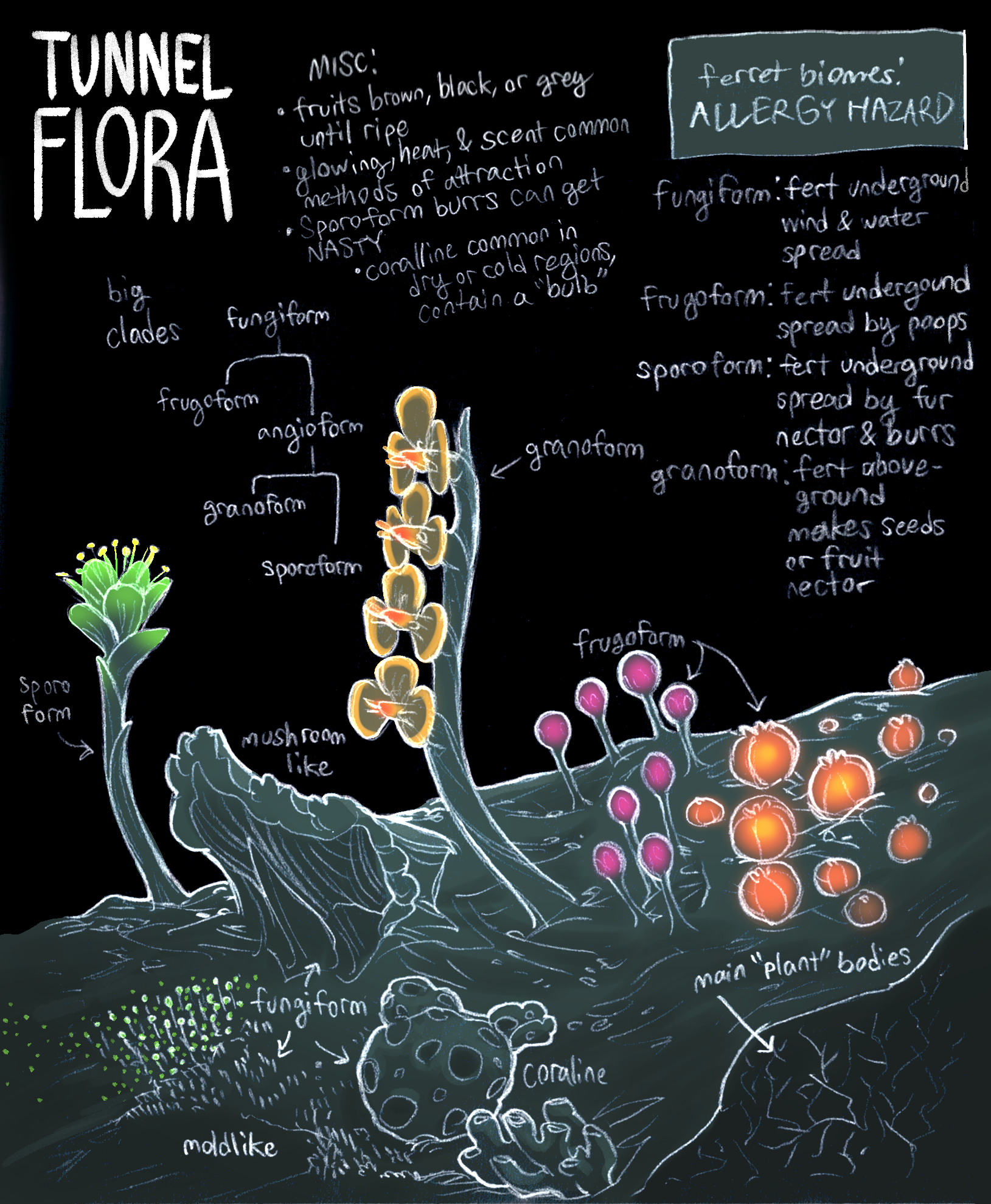
Though it depends on the local depth of the tunnels, generally the upper half of the underground is dominated by warm sinkholes filled with shade tolerant and cold intolerant plants and the fungi/detritivores feeding on them. These fungi grow their flowers down into the midlevel of the tunnels. The lower half of the underground has its producers living in geothermal pools, creating sugars via chemosynthesis or thermosynthesis. They have their own extremophile fungi/detritivores, and also an unusual kind of flora takes advantage of high temperatures to dissolve and eat compounds in the rock and volcanic solids. Much of this flora also sends flowers and fruit up to the midlevel tunnels for sexual reproduction and distribution. As a result of this, soil horizons are extremely localized and jumbled.
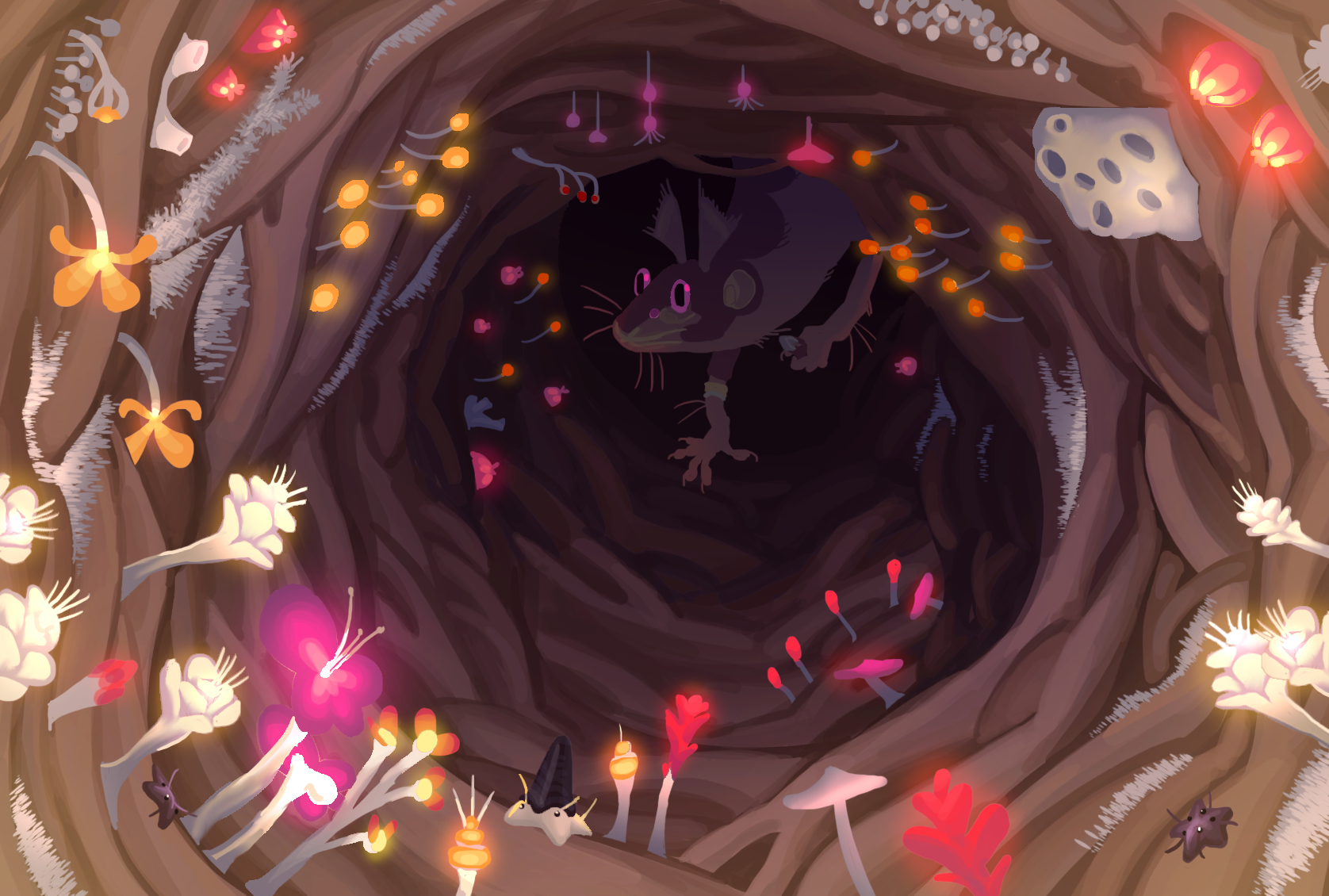
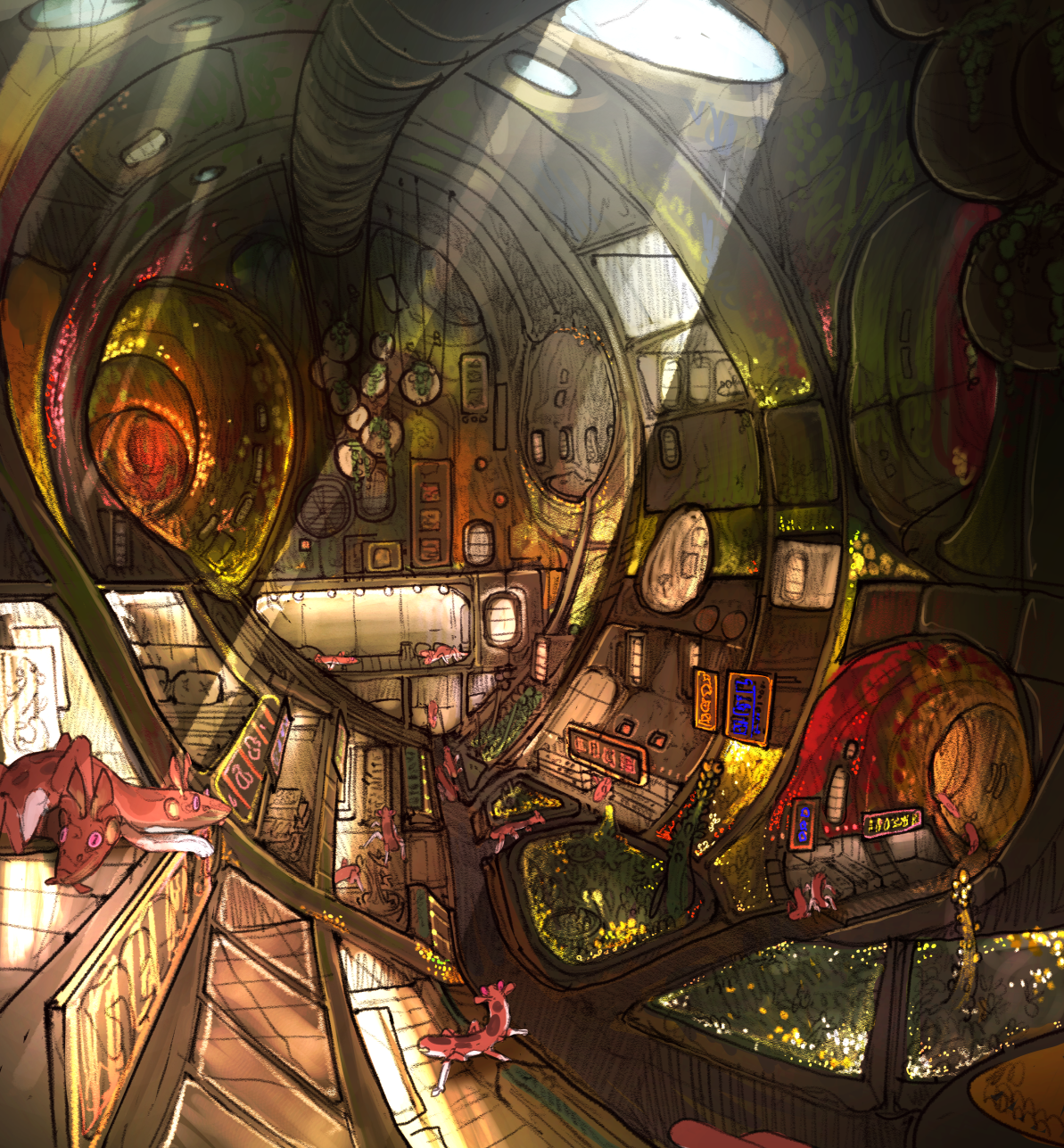
Artwork by Jack Friedman 2021
Although some of the tunnels that bug ferrets inhabit are excavated with tools, they are usually cultivated instead! By manipulating the local flora, bug ferrets can grow new tunnel offshoots wherever they please, with significantly less risk of cave-in than excavation. The main problem is that this is slow. If a ferret wants to create a new wing of tunnel for future habitation by this growth, it will likely be their grandchildren and great grandchildren who will inhabit it. Excavation mostly happens in areas with a rapidly expanding population and is considered dangerous and desperate by traditionalists.
They do not experience claustrophobia, so the hallways and rooms of their dwellings are usually only widened to account for how many ferrets need to occupy it or pass by at once. Oxygen circulation and cooling is another major issue underground, especially when you are cramming people into small spaces willy-nilly. Ferret dwellings and public spaces often have a large open atrium packed with oxygenating flora, machinery, and/or a connection to a large communal circulation device that brings cold air down from the surface.
Ferret spaces are generally at least dimly lit by either bioluminescence or artificial lights, but ferrets do not strictly require light to navigate.
Public and private are blurry on multiple levels with ferrets. In the family house, there is very little room for privacy, as the vast majority of activities are meant to be done in groups. For the average ferret, unnecessary separation from others is anxiety-inducing. Bathrooms have multiple seats and no stalls. Bedrooms have a big sleep pile. Squeamishness about sex and bodily function is rare, though inbreeding remains a taboo and generally a household’s young offspring sleep separately from their parents and adult offspring. For many, having to sleep in a separate adult-offspring bedroom with siblings is an embarrassment as they are expected to not remain in their birth family’s house after adulthood.
Some of the rooms in a household may also blur together and be shared with connected families on a negotiated basis, excluding the bedrooms and egg room. Or, if a house lacks a certain facility (in crowded metropolitan areas houses can be missing really weird things) that family will use the nearest public facility. Public bathhouses, toilets, storage, medical facilities, places of worship, and kitchens are common.
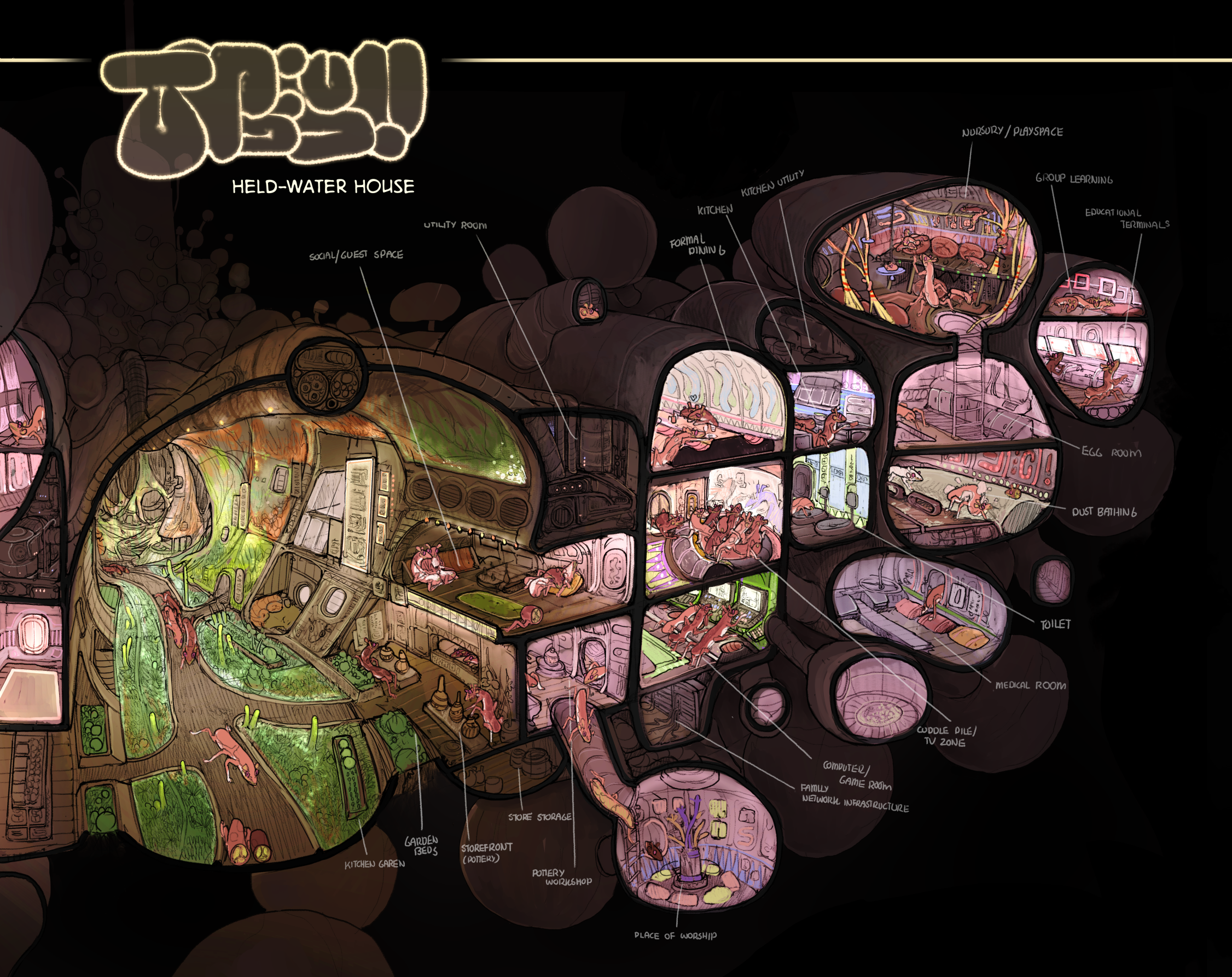
Artwork by Jack Friedman 2021
On a larger scale, the house itself may blend into the public space. Similar to a storefront with the shopkeeper’s apartment above, the family’s place of business is usually an arm extension of their dwelling, with only doors as separation. More unusual is that they may have many rooms in their house with doors that lead into their neighboring houses, places of business, public areas, and public buildings. These doors are usually marked with banners or writing that declares what they lead to, but often they aren’t even locked.
This phenomenon is multiplied in areas with a long history of habitation! These places are saturated with ancient rooms that have traded hands countless times, leading to single family houses with amoeba-like shapes and neighboring dwellings tangling into them, divided only by social agreements and marked doors. There is usually still some amount of zoning—businesses and public facilities tend to surround large atriums, so that they can be accessed without traipsing through the houses of other families. Ferrets are not hugely territorial but uninvited guests and public traffic through your dwelling is considered a nuisance because their actions cannot be controlled to the same degree that family members’ can.
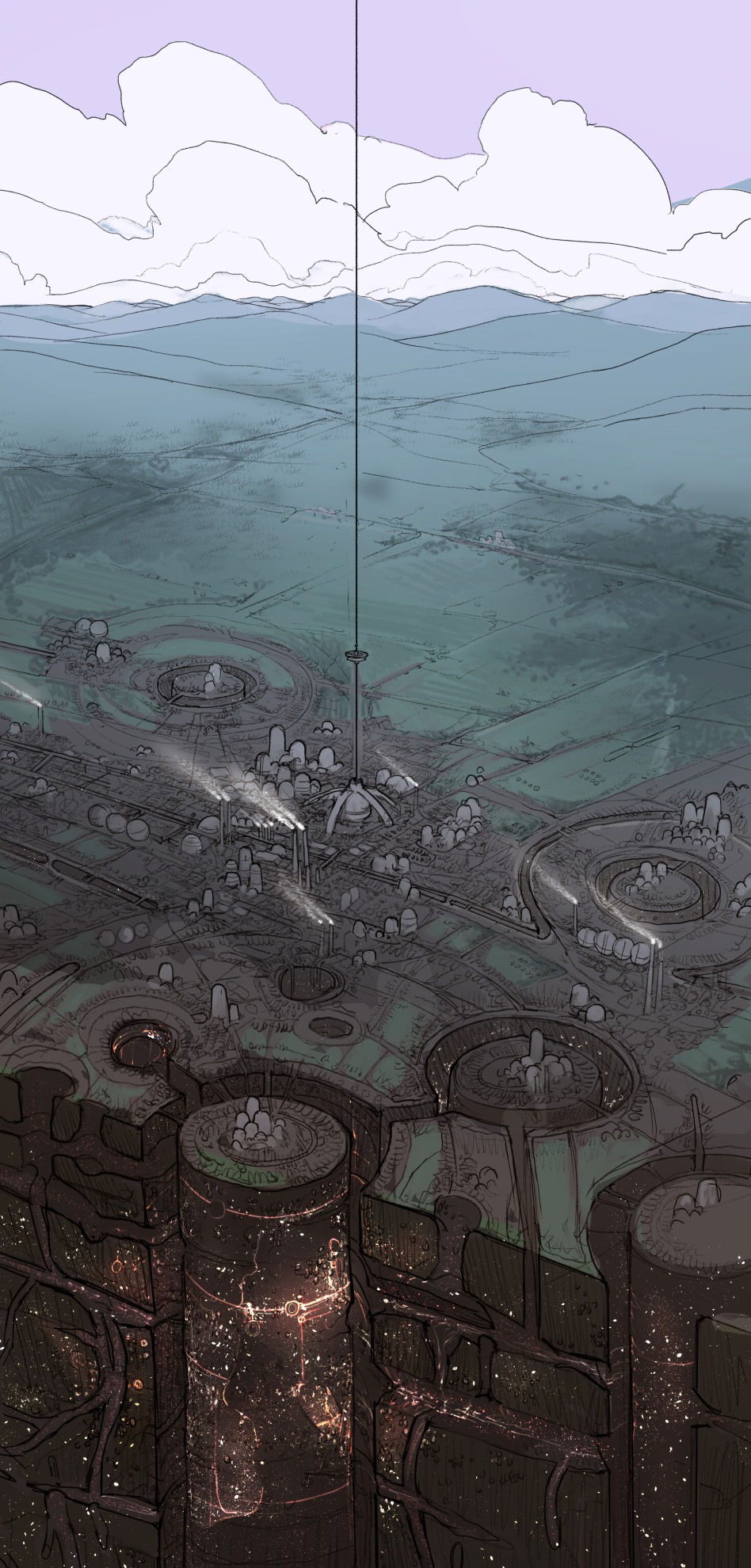
Artwork by Jack Friedman 2021
So if private spaces and public spaces are so blurred, how is theft discouraged? Well, even if doors are unlocked, rooms are rarely empty for long. Ferrets don’t sleep for a long uninterrupted period at a specific time of day either, different households will have different daily sleep rhythms irrespective of the sun (most sleeping about twice a day for 4-5 ish hours at a time) and different ferrets in that household may have different sleep shifts. So, there’s never a great time to sneak in and nab something. Strangers walking through the house also need a legitimate reason for being there, otherwise the household’s workers will remove them.
Generally a family will know everyone behind each door as well, so stolen objects are quickly noticed and often easily traced. An individual ferret is also dissuaded from stealing by the family structure– if they are caught, their whole family is on the hook for it, and the other ferrets in their household will be extremely displeased with them. If an entire family mobilizes to steal from another one, then, well, that’s a bit more involved than petty theft and has different and even more severe social consequences.
And as for the organized crime scene in ferret society, if they want something you have, they’re not going to care whether you’re watching your stuff or locking your doors.